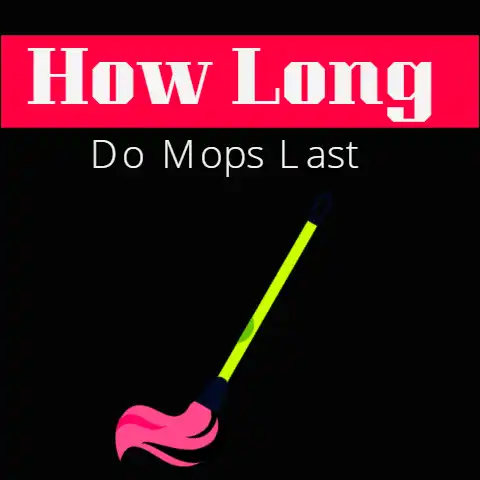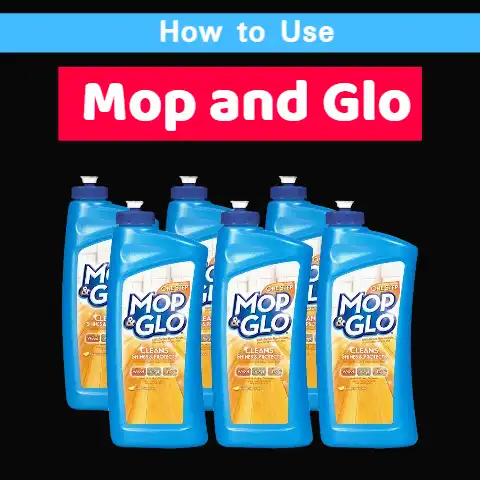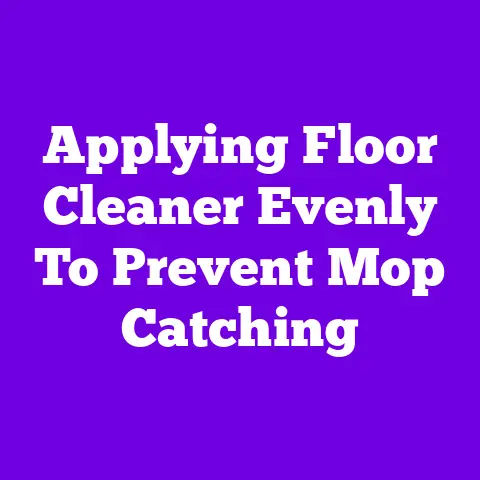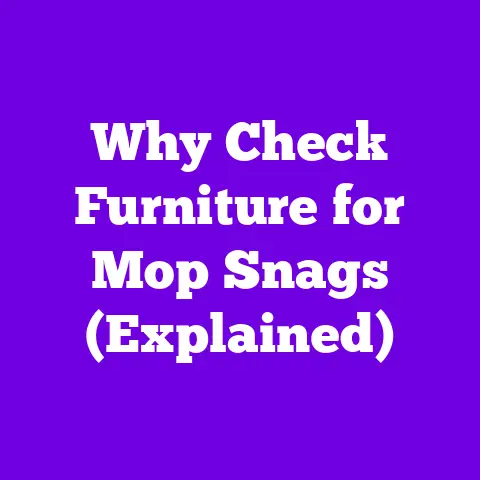How To Dry Mop Heads With Hygiene (From Soaked to Spotless)
To dry mop heads hygienically, rinse them thoroughly under running water to remove dirt, then either clean in a dishwasher or washing machine if removable, or lather with dish detergent in a bucket of soapy water before rinsing. After cleaning, air dry the mop head completely indoors or outside before storing it in a closed container to prevent bacteria and mold growth.
If you’ve ever found yourself frustrated by damp, musty mop heads that never seem to dry completely, you’re not alone.
It’s a common challenge that many of us face in our quest for a spotless and sanitary living or working environment.
But fear not, for today we embark on a journey to demystify the art of drying mop heads.
From understanding the importance of drying mop heads to exploring different methods and maintenance practices, we’ll cover it all.
Why is drying mop heads important, you might ask?
Well, allowing your mop heads to dry thoroughly is crucial for several reasons. Firstly, damp mop heads can become a breeding ground for bacteria and unpleasant odors, compromising the cleanliness of your floors.
Additionally, excess moisture can cause mop heads to deteriorate more quickly, reducing their lifespan and effectiveness.
By mastering the art of drying mop heads, you’ll not only maintain a higher level of cleanliness but also prolong the life of your mop heads, saving you time and money in the long run.
Throughout this blog post, we’ll explore different drying methods tailored to suit various mop head materials and sizes.
Whether you have traditional cotton mop heads or modern microfiber variants, we have you covered.
We’ll also share invaluable maintenance tips to prevent mildew, ensure proper airflow, and tackle common challenges that may arise during the drying process.
Need a Fast Solution?
Searching for a quick and efficient solution for drying mop heads, look no further! We’ve got just the products and services to make your life easier.
Firstly, consider investing in a high-quality spin mop with a built-in wringer. This innovative design allows for rapid drying of mop heads, saving you precious time and effort.
Additionally, microfiber mop heads are highly absorbent and dry faster than traditional cotton ones.
With these recommended products and services, drying your mop heads will be a breeze, ensuring cleanliness and convenience in no time!
How to dry and clean mop heads?
Wet and dust mop heads need no bleach or fabric softener but need a gentle detergent wash in hot water.
It is a must to rinse before putting it to dry in a closed container.
Using dryer sheets and keeping them above 140 degrees temperatures ruins the microfibers.
Therefore, treat mop heads delicately and dry them on low heat.
Through my practical knowledge, the best way for mop drying is by keeping the mop head against the floor, the actual breeding ground.
Assure you are not lifting it in the mid of the stroke of the dry mop as it will carry built-up debris.
Lift the after every few strokes the mop head and shake on a trash can such that the collected debris is removable.
Go forth and back in a uniform pattern over the clean floor, and overlap on cleaner floors each stroke a few inches.
What it is to dry the mop heads after washing?
It is tempting to toss the mop refills as reusable microfiber in the dryer after washing them gently.
However, allow the mop refill to last for three months and replace them. The mop heads may be hung to dry or can be left flat.
Drying the mop heads requires proper storing. Once dry, store the dry mops in a dry, cool place.
It makes a perfect location for storage. Hang it so that the mop head does not brush against the floor.
Allow the mop so that it dries thoroughly, and the mop should be ready for the next use.
Prevent the mop from becoming a hazard for cleaning. You may do it by replacing the mop head.
Replace the mop head when required.
Consider aiming for replacement once in two or three months, and if possible sooner as the mop looks dirty.
Replace the mop head as required. Prevent your mop by replacing the mop head and becoming a cleaning hazard.
Consider replacement once in two to three months or even earlier if it looks dirty.
Floors are clean depending on the mop head. A worn and soiled mop is never effective.
Tips for Mopping
#1
Keep your house clean and consider mopping using two buckets. Use plain water in one bucket for rinsing and detergent in a bucket.
Start mopping the floor with a detergent bucket. For rinsing, use a bucket to dip the dirty mop.
Squeeze water out and alternate buckets, until floor cleaning is complete.
If the water bucket is soiled, replace it with a cleaning solution and fresh water.
Lastly, mop the bathroom, or use a separate mop only for the bathroom.
It is a room full of germs and keeping a separate mop is a way to avoid cross-contamination around the house.
#2
Traditional mops are absorbent and have the capacity of scrubbing well by choosing a potential alternative, a hygienic flat mop.
Using a dry mop for the floors has advantages.
We determined through the tests that performing it correctly helps remove dust, bacteria, and dust from the floor.
Dry mopping is faster by 25 percent than wet mopping and it retains different floor type’s integrity.
Dry mop heads benefits
Dry mop heads enable removing dust, dirt, and bacteria from wet mop heads.
It is to help maintain floors without any obstacles such as slippery, wet floors. Dry
When to use dry mop heads?
Dry mop heads are required for floor cleaning, as desired, from start to finish.
There is a need to understand the needs. It is essential to meet specific needs and to consider when to use:
- Cleaning frequency– A dirtier space or a place having more exposure may need to use dry mop heads. It is a way of keeping the area cleaner from bacteria growth and doing less than often cleaning. Each time using a cleaner dry mop head is an essential cleaning tool. It ensures no spreading of germs and bacteria.
- Foot traffic amount– Experiencing foot traffic at a high level means you must opt for easy removal of dirt and debris. The action should be quick in drying process and dry mop heads are effective. Wet mopping is the best option as it allows effective cleaning.
- Appearance– The commercial space appearance is a consideration. It leaves residue on the floor that may be unsightly. There is a need for wet mopping to clear the residue, but always using wet mopping, will make the floor slippery. Thus, prioritizing the dry mop heads, machine washable is the better option as the floor dries faster.
- Chemical sensitivities– Having family members or employees sensitive to chemicals will compel using dry mop heads with lower chemical content. You may opt for removable heads mop or flat heads mop.
Conclusion
The rule of thumb is to understand needs and make the right choice of cleaning with dry mop heads.
Consider different situations and the cleaning types with soapy water, clean water, or warm water.
It is crucial to know the messes you deal with.
There is always the necessity for a wet mop, but ensure the mop head is dry each time you want to use it. It is the advantage.





